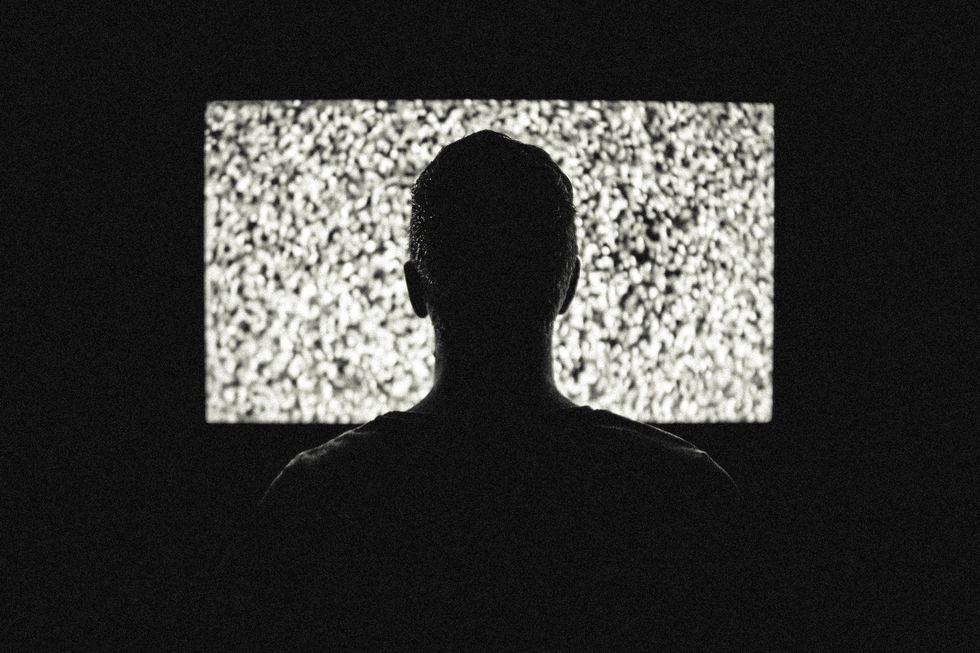For my senior year of college, Endicott requires us to complete a senior research paper called Thesis. This class is broken up into two semesters and, in Thesis I, we focus on the research that is already out there regarding our specific topic. In Thesis II, we conduct our own research study and write about what we find. As I'm in Thesis I now, I thought it might be interesting to include some of the research I'm finding in an article. My topic is about how interpersonal violence (IPV) depictions in the media differ based on race and gender. While I don't go into too much detail here about the disparities, you should really think about how the media shapes your perceptions and stereotypes about who a victim and who a perpetrator are. You might be surprised to learn that many of the stereotypes we hold of these figures are skewed and even inaccurate.
Consider this: an African-American female bullies her Caucasian husband by calling him names, degrading him, and pointing out his vulnerabilities. She coerces him to have sex but criticizes his performance afterward. He talks to her about how these things make him feel, but instead of ceasing the torment, she calls him a coward and punches him. He protects himself as best he can, but she still successfully leaves bruises and scratches on him. Now ask yourself: does this sound familiar? Do you recall hearing or reading about any similar stories like this before? The likelihood that you do is slim (Bates, Kaye, Pennington, & Hamlin, 2018). The fact of the matter is that the majority of what the media reports both in newspaper articles and television news stories are heavily focused on African-American male-perpetrated abuse targeting Caucasian female victims; that is, the opposite of the hypothetical just described.
It is also troubling that believing male victims is unlikely, and thus, they are hesitant to report abuse they experience (BJS NVAT, 2016). As Hammock, Richardson, Lamm, Taylor, and Verlaque (2017) state, female perpetrators are perceived as less threatening, while female victims are perceived as "weaker and in need of protection" (p. 357). Considering this skewed narrative and disproportionate reporting by the media, it is no surprise that the stereotypes people hold of what an abusive partner and abused victims look like are that of a black male and white female, respectively. This literature review will consider the overwhelming evidence in television and newspaper stories that suggest these imbalances exist. The need for change in the domestic violence sphere is more urgent than ever, and there is significant work to be done if these steep statistics are to decrease.
Not only is there a disparate presentation of perpetrators and victims of IPV, but the rates of IPV in the United States are startling. In 2016, the National Crime Victimization Survey (NCVS) reported 1,109,610 cases of domestic violence, which only includes victimization committed by intimate partners and family members (Morgan & Kena, 2017, p. 5). On top of that, 597,740 cases of intimate partner violence (IPV) were reported, which includes victimization committed by current or former spouses, boyfriends, or girlfriends. While these statistics may be startling, they become increasingly frightening considering that a mere 51.3% of serious violent crimes and 42.1% of all violent crimes were reported to police, where serious violent crimes include rape, sexual assault, robbery, and aggravated assault (Morgan & Kena, 2017, p. 1). As Wilcox (2008) eloquently states, "we cannot be certain about the numbers of people it affects since it is a crime which frequently goes unrecorded" (p. 1). With this caveat in mind, it becomes clear that the recorded prevalence of violent crime, particularly intimate partner violence (IPV), is higher than it appears.
Additional statistics recorded in the NCVS Victimization Analysis Tool (NVAT) demonstrate that simple assault in 2016 was reported 3,840,857 times, an increase from 3,179,444 reports in 2015 (BJS NVAT, 2016). Aggravated assault reports came in at 1,084,342 in 2016, another significant increase from 816,757 cases in 2015, and an increase that surpassed nearly every other year's case count since 2012. On a positive note, however, the NVAT also displays a decrease in rape and sexual assault reports from 431,837 in 2015 to 323,449 in 2016. Still, the NCVS data provide clear evidence of the imminent need to employ strategies that will reduce rates of IPV across the United States. Not only are rates of interpersonal violence high, but there are also disparities in media portrayal of perpetrators and victims based on gender and racial differences that must be addressed (Mastro, Lapinski, Kopacz, & Behm-Morawitz, 2009).








 man running in forestPhoto by
man running in forestPhoto by 





